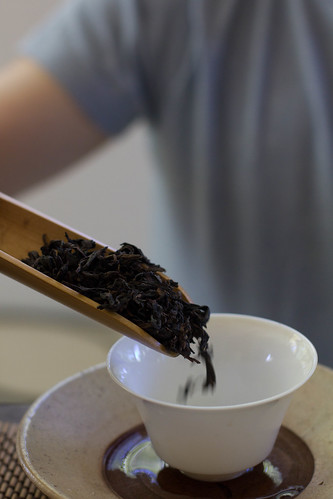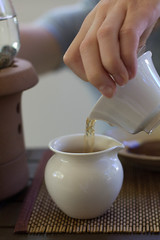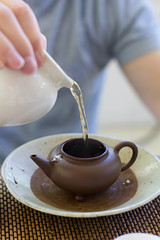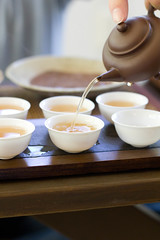This is Part Two in a two part series about evaluating Yixing pots. It is inspired in part by Michael Wong of The Tea Gallery
And Now the Conclusion…

After testing the pot with water, the logical next step is to add tea to the equation.
The most obvious thing to do might be to add some leaves, hot water, and taste some tea.
Instead, this test allows you to diminish the differences in thermal properties or pour times that might add variables in such an experiment, and focus for the moment on the effect of the clay on the tea liquor.



To have enough tea for the experiment, brew two rounds of tea in a gaiwan and combine them in your faircup. Fill the preheated teapot with half of the tea for the pitcher, and once again leave it for a moment.
In your matching cups, serve one cup per guest with water from the pitcher - being brewed in the gaiwan, this has no influence from the pot.
Next fill the second set of cups with tea from the pot, either directly or from a separate faircup. Taste the tea side by side and make note of the differences. We did our testing with an aged Lao Cong Shui Xian, and found that high floral notes were muted by the teapot. This might suggest that I was correct in pairing this pot with much deeper Hong Kong style roasts.
To expand on this idea, you should of course repeat this process with other teas. But I also like to share with guests the comparative strengths and weaknesses of two teapots by performing this method side by side. Instead of serving tea straight from the gaiwan and then from the pot, simply compare tea left in two distinct pots.
I can’t wait to hear what additional experiments you come up with.
Credits: Photography by Dae. Handsome modeling by David. Narrated by Majel Barrett.